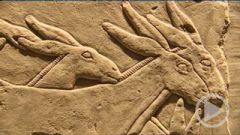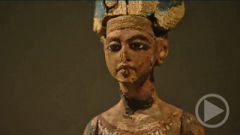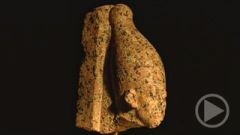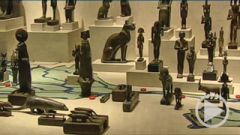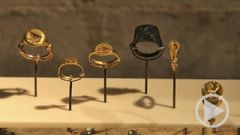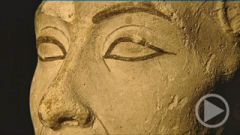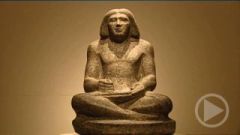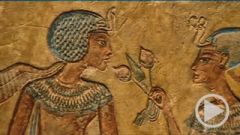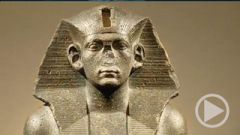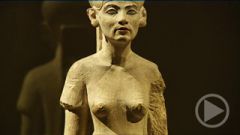- Home
- »
- Germany
- »
- Berlin
- »
- Museum Island
- »
- The Berlin Egyptian Museum
- »
- The Berlin Egyptian Museum - Providing for the Afterlife: Bu...
Providing for the Afterlife: Burial Chambers
Burial Chambers
Every day life is a central theme depicted on the walls of burial chambers during all millennia of Egyptian history. The reason for this consistency is that the Egyptians believed the afterlife to be an exaggeratingly idealized version of life.
The harvest of grain, fruits and vegetables is depicted in great detail. The movement of the man punting the papyrus boat to bring sacrificial offerings to the deceased master is exceptional.
The theme of these reliefs is repeated in a fuller context in the three burial chambers standing openly in the room.
The stone piles that seem almost structureless from the outside reveal elaborately decorated walls on their insides, which are covered with several registers of bas-reliefs and mural paintings. These tombs from the middle of the third millennium BCE are invaluable sources for the cultural history of ancient Egypt. The reliefs depict easily legible scenes of every day life, ranging from agriculture to handicraft, animal life and family life.
The central focus point of the wall decorations in all three chambers is a false door, behind which a burial shaft leads to the actual burial chamber down below. The rolled up mat at the top end of the false door indicates that the door is open, even though a stone wall closes the passageway. Only the Ka of the deceased was able to step over this threshold, which remains closed for the living. Above the false door there is a small relief depicting the deceased at a sacrificial altar. It is to him and the organization of his eternal afterlife that the murals are dedicated. In order to make the small tombs accessible for visitors, their walls were spread apart and positioned so that the abundance of their details and the quality of the fragile reliefs can be presented in optimal lighting.


